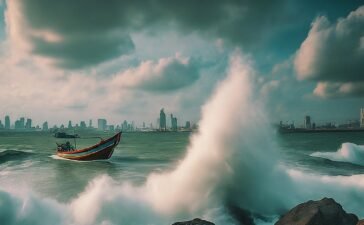Established in 1982 as Amarin Plaza Plc, The Erawan Group Plc has a mission to be an explorer and well-diversified leader committed to innovative developments in the hospitality industry. Chief financial officer Kamonwan Wipulakorn discusses the company’s strategy and outlook.
BUSINESS:
Please explain Erawan’s business model.
The Erawan Group is Thailand’s leading hotel investment company with diversified hotel portfolio from luxury to midscale and economy segments across Thailand’s major tourist destinations. Starting with two luxury hotels in central Bangkok (Grand Hyatt Erawan and JW Marriott) in the early 1990s, we currently have 13 hotels in operation partnering with world-class operators such as Hyatt, Marriott, Accor and InterContinental.
We believe success comes from the right combinations of hardware (effective hotel investment) and software (efficient hotel operation). Our business model is to mix our strength in hotel investment with the world-class hotel operators’ strengths in distribution, brand recognition and operating expertise.
How does Erawan decide on a property and an international chain partner?
It all comes down to four key elements: the right product at the right place (location) at the right price (investment cost) with the right distribution network (brand). We have our own team to constantly review market conditions of certain destination to determine the segment and brand that best fits the market potential. Hence we took the lead to expand more into the midscale and economy segments than luxury over the past six years as we foresee growing arrivals from up-and-coming markets such as China and India.
Why has Erawan expanded into the economy segment?
It began with our intention to build a well-diversified portfolio. With demand growth potential from emerging markets, we identified the need for economy hotels, which at the time were mostly operated by fragmented local operators. Our key success factors would be brand recognition with a global network and economies of scale. It’s not feasible if you are going to build just one economy hotel. With the economy of scale, we can achieve lower investment cost per room and lower operating costs. We choose Accor’s “ibis” brand which offers standardised value-for-money product and strong distribution network with almost 100,000 rooms worldwide. We now have seven Ibis hotels in Thailand with two more coming next year. So far, the results have confirmed us that it was the right move to diversify.
INDUSTRY:
Is the Thai (or Bangkok) market saturated with limited growth?
In the almost 20 years since we opened our first hotel, Grand Hyatt Erawan, we have witnessed more and more players. Nevertheless, with our strong customer base and ability to respond to the dynamic market environment, Grand Hyatt remains a market leader. On the back of Thailand’s growing economy, we believe Thailand and particularly Bangkok and industrial areas such as the Eastern Seaboard with Pattaya as a centre will continue to offer market potential in the long run. Other destinations will also expand, especially southern areas apart from Phuket and Samui.
The market, however, will be very competitive and challenging. As such, our strategy will be to continue improving our existing hotels to remain competitive and be very selective in new hotel investment.
FINANCIAL PERFORMANCE:
Erawan’s financial performance has improved tremendously in the past two years on improving market conditions and growing demand from high-economic growth countries. What can investors expect going forward?
In the first quarter of this year, we recorded a net profit of 78 million baht, a 34% increase year-on-year. To enhance returns to shareholders, we sold one rental property in the second quarter to realise its increasing value. We expect to record a gains from asset sales of 665 million baht in this quarter. With growing tourist arrivals and a strong domestic market, we expect 30% growth in hotel revenue this year.
For the next five years (2011-15), we will continue our investment focus with selective locations in the established Thai destinations where we already have hotels, understand the markets and customers. We will focus on the economy and midscale segment where we see higher growth potential. Investment will be both for newly built hotels and for acquisitions and conversions of quality hotels available at the right cost.
Erawan’s D/E ratio is relatively high at 3x. Do you plan to reduce this?
Expected performance growth this year will improve the ratio. Our asset monetisation strategy for the next five years will also help. We record our assets at cost less depreciation; hence the asset values on the balance sheet do not reflect fair market values. To enhance returns, we sold our Phloenchit office building for 1.4 billion baht to a property fund in April, which will generate a gain of 665 million in the second quarter. Proceeds will be used to repay some debts and for investment, and as a result our D/E ratio has already improved to 2:1.
What occupancy rates does the hotels need to make a profit?
Break-even occupancy depends on the segment as each has a different revenue mix. For example, hotels with higher F&B contributions to revenue can have lower occupancy and still achieve profit. For example, luxury hotels in Bangkok could have 40-45% contributions from F&B, strongly supported by non-guests. For economy hotels, however, revenues mainly come from rooms.
MISCELLANEOUS:
What do you feel are the biggest risks facing your business today?
Political issues aside, a major threat in the hotel industry is there is no mechanism to control supply, which has led to a flood of new supply over the past few years. Hotels are long-term investments. We take risks from natural disasters, epidemics, economic downturns or political unrest into consideration from Day One. Short-term impacts are just part of the process. In the longer term, if you are offering the right products and services, values for our hotels are always going to be there.
Source: www.thailistedcompany.com





